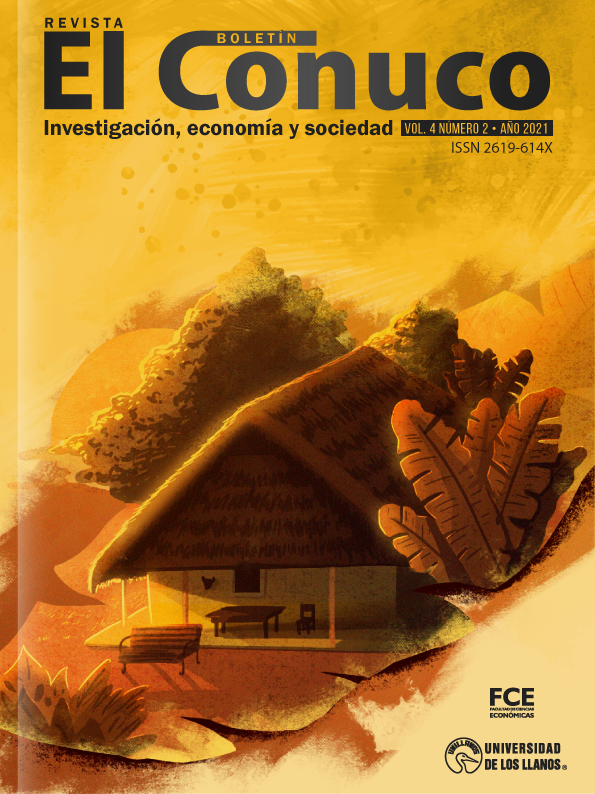Estudio de caso sobre el efecto de las percepciones del turista en los comportamientos posconsumo
A study on the effect of tourist perceptions on postconsumer behaviors
Contenido principal del artículo
Resumen
Objetivo: establecer la asociación entre las percepciones de los turistas que visitan Villavicencio y la Hacienda CSQ´No con sus intenciones posconsumo. Método: Se realizó una revisión de literatura para los diferentes enfoques de calidad y valor percibido, intención de recomendación y recompra, y las escalas desarrolladas para su medición. Se planteó un ejercicio investigativo aplicado, circunscrito a las percepciones de los turistas que visitaron la Hacienda CSQ´No sobre sus intenciones comportamentales, mediante encuestas. La metodología utilizada fue cuantitativa, con un muestro no probabilístico por conveniencia. Resultados: Se confirmó que existe una correlación positiva y significativa entre la calidad y el valor percibido con la intención de recompra y de recomendación. Asimismo, se observa una diferencia comportamental entre los grupos que visitan el destino. Discusiones: Los hallazgos contribuyen a una mejor comprensión de las percepciones y actitudes comportamentales posconsumo de los turistas que visitan el destino, teniendo en cuenta el efecto moderador del grupo de viaje. Conclusiones: El conocimiento de las actitudes comportamentales de los grupos, puede contribuir al desarrollo general y a la mejora de la ventaja competitiva del destino.
Descargas
Detalles del artículo
Palabras clave
Referencias
Minghetti, V. (2003). Building customer value in the hospitality industry: towards
the definition of a customer-centric information system. Information Technology & Tourism, 6(2), 141–152. https://doi.org/10.3727/109830503773048246
Molina, O. E. (2013). Turismo rural y gobernanza ambiental: conceptos divergentes en países desarrollados y países en vías de desarrollo. Turismo y Sociedad, 14, 215-235.
Narbasta, W. (2021). Influencia de la atractividad turística percibida en la intención de recomendación como destino turístico: Caso distrito de Machupicchu. Cusco [trabajo de investigación, Universidad ESAN]. Repositorio Institucional ESAN. https://n9.cl/ejzm4
O’Neill, M. A., Williams, P., Mac Carthy, M. & Groves, R. (2000). Diving into service quality – the dive tour operator perspective. Managing Service Quality: An International Journal, 10(3), 131-140. https://doi.org/10.1108/09604520010336650
Oliver, R. L. (1997). Satisfaction. A Behavioral Perspective on the Consumer. McGraw Hill.
Organización Mundial del Turismo (2020). Glosario de términos de turismo. https://n9.cl/15cp
Organización Mundial del Turismo. (2021). Turismo rural. https://n9.cl/lorfi
Otero-Gómez, M. C. & Giraldo-Pérez, W. (2022). Medición del valor de marca basado en las percepciones del turista internacional: una investigación sobre Villavicencio (Colombia). Revista Universidad & Empresa, 24(43), 1-23.
Parasuraman, A. & Grewal, D. (2000). The impact of technology on the quality-value-loyalty chain: A research agenda. Journal of the Academy of Marketing Science, 28(1), 168-174.
Pérez, E. (2001). Hacia una nueva visión de lo rural. En: N. Giarraca (comp.), ¿Una nueva ruralidad para América Latina? (pp. 17-31). CLACSO.
Petrick, J. F. (2004). Are loyal visitors desired visitors? Tourism Management, 25(4), 463-470. https://doi.org/10.1016/S0261-5177(03)00116-X
Quiroga, G., Antonialli, L. M., Da Silveira, A. A. & Oliveira, A. (2020). Impacts of the perceived quality by consumers’ of à la carte restaurants on their attitudes and behavioural intentions. Asia Pacific Journal of Marketing and Logistics, 32(2),
-321. https://doi.org/10.1108/APJML-11-2018-0491
Ramkissoon, H. & Uysal, M. S. (2011). The effects of perceived authenticity, information search behaviour, motivation
and destination imagery on cultural behavioural intentions of tourists. Current Issues in Tourism, 14(6), 537-562.
https://doi.org/10.1080/13683500.2010.493607
Razak, N. S. A., Marimuthu, M., Omar, A. & Mamat, M. (2014). Trust and Repurchase Intention on Online Tourism Services among Malaysian Consumers. Procedia - Social and Behavioral Sciences, 130, 577–582. https://doi.org/10.1016/j.sbspro.2014.04.067
Real Academia Española. (2006). Diccionario esencial de la lengua española. https://n9.cl/9qxgf
Salegna, G. J. & Goodwin, E. A. (2005). Consumer Loyalty to Service Providers: An Integrated Conceptual Model. The Journal of Consumer Satisfaction, Insatisfaction and Complaining Behavior, 18, 51-67.
Seiders, K., Voss, G. B., Grewal, D. & Godfrey, A. L. (2005). Do Satisfied Customers Buy More? Examining Moderating Influences in a Retailing Context. Journal of Marketing, 69(4), 26–43. https://doi.org/10.1509/jmkg.2005.69.4.26
Shirkhodaie, M. & Rastgoo-Deylami, M. (2016). Positive Word of Mouth Marketing: Explaining the Roles of ValueCongruity and Brand Love. Journal of
Competitiveness, 8(1), 19–37. https://doi.org/10.7441/joc.2016.01.02
Shoemaker, S. & Lewis, R. C. (1999). Customer loyalty: the future of hospitality marketing. International Journal of Hospitality Management, 18(4), 345-370. https://doi.org/10.1016/S0278-4319(99)00042-0
Sirohi, N., McLaughlin, E. W. & Wittink, D. R. (1998). A model of consumer perceptions and store loyalty intentions for a supermarket retailer. Journal of Retailing, 74(2), 223–245. https://doi.org/10.1016/S0022-4359(99)80094-3
Wei, J., Lian, Y., Li, L., Lu, Q., Chen, W. & Dong, H. (2023). The impact of negative emotions and relationship quality on consumers’ repurchase intention: An empirical study based on service recovery in China’s online travel agencies. Heliyon, 9(1), E12919. https://doi.org/10.1016/j.heliyon.2023.e12919
Wei, J., Zhu, S., Hou, Z., Dong, H. & Li, J. (2022). Research on the influencemechanism of emotional intelligence and psychological empowerment on customers’ repurchase intention underthe situation of online shopping service recovery. Current Psychology. https://doi.org/10.1007/s12144-022-02841-5
Yang, L., Hu, X., Lee, H. M. & Zhang, Y. (2023). The Impacts of Ecotourists’ Perceived Authenticity and Perceived Values on Their Behaviors: Evidence from Huangshan World Natural and Cultural Heritage Site. Sustainability,15(2), 1551. https://doi.org/10.3390/su15021551
Yoon, Y., Gursoy, D. & Chen, J. (2001). Validating a tourism development theory with structural equation modeling. Universidad de los Llanos 15 Tourism Management, 22(4), 363–372. https://doi.org/10.1016/S0261-5177(00)00062-5
Žabkar, V., Makovec, M. & Dmitrovic, T. (2010). Modelling perceived quality, visitor satisfaction and behavioural intentions at the destination level. Tourism
Management, 31(4), 537-546. https://doi. org/10.1016/j.tourman.2009.06.005
Zeithaml, V. A. (1988). Consumer Perceptions of Price, Quality, and Value: A MeansReferencias
End Model and Synthesis of Evidence. Journal of Marketing, 52(3), 2-22.
Zeithaml, V., Berry, L. & Parasuraman, A.(1996). The Behavioral Consequences of Service Quality. Journal of marketing, 60(2), 31-46. https://doi.org/10.2307/1251929


 PDF
PDF
 FLIP
FLIP







